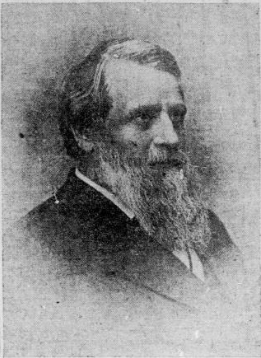John Eaton (general) facts for kids
For other people named John Eaton, see John Eaton (disambiguation).
Quick facts for kids
John Eaton
|
|
|---|---|
 |
|
| United States Commissioner of Education | |
| In office March 16, 1870 – August 5, 1886 |
|
| President | Ulysses Grant Rutherford Hayes James Garfield Chester Arthur Grover Cleveland |
| Preceded by | Henry Barnard |
| Succeeded by | Nathaniel Dawson |
| Personal details | |
| Born | December 5, 1829 Sutton, New Hampshire, U.S. |
| Died | February 9, 1906 (aged 76) Washington, D.C., U.S. |
| Education | Dartmouth College (BA) Rutgers University, New Brunswick (AM, LLD) |
| Signature | |
| Military service | |
| Allegiance | • Union |
| Branch/service | Union Army |
| Rank | |
| Unit | 27th Ohio Infantry |
| Commands | 63rd U.S. Colored Infantry |
| Battles/wars | American Civil War |
John Eaton, Jr. (December 5, 1829 – February 9, 1906) was an important American educator. He also served as the U.S. Commissioner of Education. During the American Civil War, he was a Union Army colonel and later a brigadier general.
Contents
John Eaton's Early Life and School Days
John Eaton was born in Sutton, New Hampshire. He went to Thetford Academy in Vermont. John was the oldest of nine children. His father was a farmer.
Eaton graduated from Dartmouth College in 1854. He had to teach all four years he was in college. This helped him pay for his school and living costs. After college, he studied at Andover Theological Seminary. In 1862, he became a Presbyterian minister. He also earned a Master of Arts and a Doctor of Law from Rutgers University.
John Eaton's Career
Before the war, Eaton taught school in Cleveland. He was also the acting superintendent of schools in Toledo from 1856 to 1859.
Serving in the Civil War
John Eaton joined the American Civil War on August 15, 1861. He started as a chaplain for the 27th Ohio Volunteer Infantry. In November 1862, Major General Ulysses S. Grant gave him an important job. Eaton became the superintendent of freedmen. These were formerly enslaved people who had gained their freedom.
Later, Eaton oversaw all military posts from Cairo to Natchez and Fort Smith. In November 1863, Grant made him the Superintendent of Negro Affairs for the Department of the Tennessee. In this role, Eaton helped set up 74 schools for freed people. On October 10, 1863, Eaton became a colonel of the 63rd United States Colored Infantry. He was later promoted to brevet brigadier general in 1866.
After the War: A Leader in Education
After the war, General Eaton returned to his work in education. He stayed with the Freedmen's Bureau until December 1865. Then, he became an editor for the Memphis Daily Post newspaper in 1866.
From 1867 to 1869, he was the state superintendent of schools for Tennessee. In 1870, he was chosen as the United States Commissioner of Education. He worked hard in the Bureau of Education. He helped organize Washington, D.C.'s Board of Education. He also reorganized the Bureau of Refugees, Freedmen, and Abandoned Lands.
From 1886 to 1891, Eaton was the president of Marietta College. In 1895, he became president of Sheldon Jackson College in Sitka, Alaska. In 1898, he was an inspector of education in Puerto Rico. He helped make its education system more organized. At the same time, he was president of Westminster College in Salt Lake City.
Eaton was also involved in many other groups. He was a leader in public health and social science associations. He helped organize educational exhibits at big events. He was also president of national education and religious education groups.
Eaton wrote several books and articles. These included a history of Thetford Academy, "Mormons of Today," and "The Freedmen in the War."
John Eaton's Personal Life
After several years of poor health, John Eaton became very ill on February 8, 1906. He died the next day in his apartment in Washington, D.C.. He was buried in Arlington National Cemetery. Four years later, John Eaton Elementary School was named after him.
John Eaton's daughter, Elsie Eaton Newton (1871–1941), was also an educator. She worked with the United States Indian Service. Later, she became the first Dean of Women at Marietta College.
Images for kids


